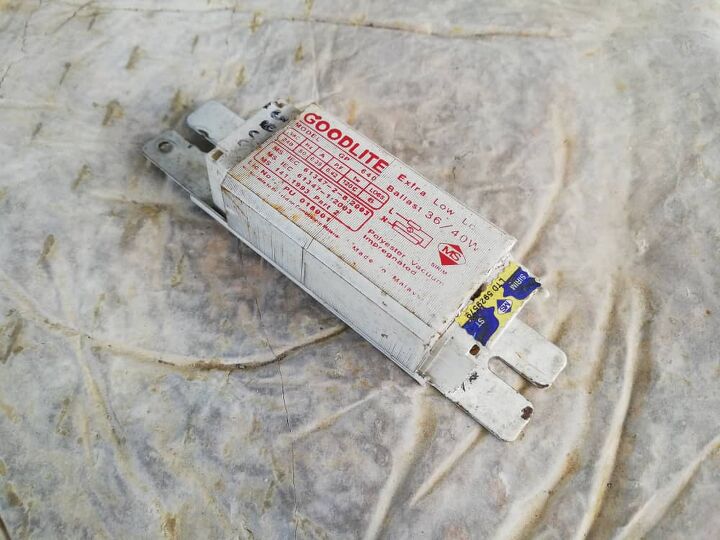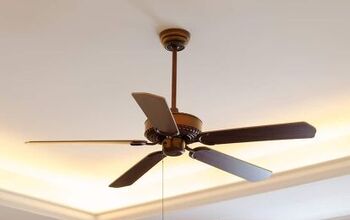What Is The Cost To Replace A Ballast?

A ballast is a passive electrical component used to limit the amount of current in an electrical circuit. Ballasts are used in industrial fluorescent lighting and typically last upwards of twenty years. However, cold environments and bad light bulbs can reduce their lifespan.
The average cost of ballast replacement is $150 for materials and labor. Materials cost an average of $27.50, and labor costs at least $100 to install a ballast replacement. Homeowners often spend $35 per ballast for programmed-start ballast installation and labor.
It is worth it to hire a professional to ensure the correct type of ballast is used for your lighting fixture. There are many brands and types of ballasts, and the costs will vary a bit. Overall, you can expect no more than $50 per ballast.
Do You Need to Hire an Electrician?
Get free, zero-commitment quotes from pro contractors near you.

The Average Material Cost of a Ballast
The average cost of a replacement ballast is $20 to $35. The price will depend both on the brand and the voltage capacity. Additionally, there are a few different types of ballasts, and their different features affect the average cost.
The Two Main Types of Ballasts
The two main types of ballasts are magnetic and electronic. Magnetic ballasts are the older technology, and they are unable to provide a perfectly consistent voltage. The inconsistent voltage is what causes these lights to buzz and flicker. In fact, the buzzing sound comes from the ballast itself, not the light bulb.
Electronic ballasts are more popular today since they can put out constant voltage. They are more reliable and, as explained above, will not make a buzzing sound. Because magnetic ballasts are much less in demand these days, they can be hard to find and more expensive.
The Material Costs of a Ballast by the Three Different Starting Technologies
There are three unique types of starting technologies used in ballasts. These technologies are called Rapid Start, Instant Start, and Programmed Start. Instant start ballasts are the most commonly used, and all options are relatively similar in terms of pricing.
| Starting Technology | Average Price | Price Range |
| Rapid Start | $25 | $10 – $50 |
| Instant Start | $30 | $20 – $50 |
| Programmed Start | $35 | $25 – $50 |
Rapid Start Ballasts
Rapid start ballasts maintain a low level of heat so the light will turn on immediately when the switch is flipped. As you can imagine, this constant pre-heating is not a very energy-efficient option. This is part of the reason why they are not as popular as instant start ballasts.
Additionally, because they work by maintaining a constant heat, they do not perform well in temperatures below fifty degrees. Therefore, you cannot use rapid start ballasts outside or in colder areas, like basements or freezer rooms.
Instant Start Ballasts
As noted above, instant start ballasts tend to be the most popular option on the market today. Like rapid start ballasts, instant start ballasts also turn on immediately. However, instead of using pre-heating, instant start ballasts use a voltage spike to achieve this. As a result, they use less electricity than rapid start ballasts.
As an advantage, the quick volt of extremely high current means that instant start ballasts work fine in cold temperatures. You can use them in temperatures as low as zero degrees. As a disadvantage, the high jolt of electricity causes wear and tear to the lighting over time.
Programmed Start Ballasts
Programmed start ballasts are used in conjunction with motion sensors to turn on only when needed. This means that they will be more expensive when coupled with the material and installation cost of the sensor. Like instant start ballasts, programmed start ballasts can be used in colder temperatures.
Programmed start ballasts typically stay on for a little while after you leave a room, which is beneficial for frequently used spaces. It actually saves electricity to leave a light on for a short while, rather than turning it off and on a lot. In other words, programmed start ballasts are the most energy-efficient option of the three.
The Material Costs of a Ballast by Voltage
As mentioned previously, the voltage or voltages of the ballast also determines ballast costs. Most ballasts are multi-voltage to allow for any differences in the lighting output. These ballasts are generally more expensive than single voltage ballasts. Below are some example costs to give you a better idea of the differences you might see when shopping for ballasts.
| Type of Ballast | Voltage | Cost |
| Rapid Start | Single, 120V | $22 |
| Rapid Start | Multi, 120-277V | $25 |
| Rapid Start, High Output | Multi, 120-277V | $40 |
| Instant Start, 2 Bulb | Multi, 120-277V | $23 |
| Instant Start, 4 Bulb | Multi, 120-277V | $27 |
| Programmed Start | Multi, 120-277V | $36 |
The Installation Cost of a Replacement Ballast
Though the fix is relatively simple, it is a good idea to hire a professional to replace your old ballast. Because the job involves exposed wires, a professional will complete it quickly and safely. A professional will be able to de-charge the lighting fixture from the outlet.
If you do this as a DIY job, you would also need a multi-meter to test the electrical output. An electrician will have this tool already.
Another reason to hire a professional is for the longevity of your replacement ballast. You also will the assurance of knowing that you have the correct ballast for your light fixture. If not, you can wear out both the ballast and the light bulb much quicker than their lifespans should otherwise last.
Since replacing a ballast is a very straightforward job, it should not take a professional electrician very long to complete. You can anticipate the project will take twenty to thirty minutes per ballast replacement. This can vary depending on the location of the lighting fixture and the complexity of the ballast.
Also, electricians often charge for an hour minimum, so this is a factor in your overall cost.
| Professional Labor | Hourly Rate |
| Electrician | $50 – $150 |
How to Know When Your Ballast Needs Replacing
The ballast determines the amount of electrical current that goes into the lighting and turns it on. If your ballast is dead, the light will not turn on at all. If the ballast is going out, the light may exhibit one or more of the following signs:
- Flickering on and off
- Inconsistent lighting levels
- Consistently too low lighting (signifying little output)
- Buzzing noise
- Delayed start (from when you flipped the switch to when the light came on)
If any of the above problems are occurring, you can check your ballast’s output with a multi-meter. This will confirm if the ballast is old and needs replacing. Otherwise, the issue could be with your lighting fixture or the wiring itself.
How to Dispose of an Old Electronic or Magnetic Ballast
Electronic ballasts can and should be recycled in your local municipality’s recycling plant. Because they do not contain any hazardous waste materials, they can also be of in landfills or municipal incinerators.
However, it is also possible to get paid for your old electronic ballasts. Because they typically contain copper inside of them, you may be able to make a few dollars off the scrap metal. You can contact your local scrap yard to see if they take electric ballasts and what the current rate is for them.
Magnetic ballasts, on the other hand, contain a toxic substance known as polychlorinated biphenyls, or PCB. If it is possible that this substance could leak, it will not be able to be recycled. If you have a large quantity, it needs to be disposed of at a hazardous waste incinerator or chemical waste landfill.
You can check with your regional Environmental Protection Agency office to get more information on your magnetic ballasts. You will have to determine what qualifies as a “large” quantity for your area and if your ballast is “non-leaking.”
Related Questions
Can I complete a ballast replacement job as a DIY project?
As noted above, it is not recommended to do this work as a DIY job, unless you have done electrical work before. This project can be dangerous, and an electric shock is definitely not worth the risk.If you do replace your ballast yourself, you will save a lot of money. In fact, most of the cost of replacing a ballast is in the labor, since the material cost is very low. However, if you do not have a multi-meter, you will need to purchase one to test your electrical output.
Do You Need to Hire an Electrician?
Get free, zero-commitment quotes from pro contractors near you.

Fluorescent lighting is not typically used in residential properties anymore. It is very harsh on the eyes, and the lighting tubes are not considered stylish. Instead, there are so many attractive options to consider for replacing fluorescent lighting fixtures.
These replacements can be very inexpensive, and there are many options that are more energy-efficient than fluorescent lighting. Therefore, you can consider a replacement to be an investment. You will see much cheaper energy bills, especially with LED lighting, for example. In other words, the replacement of your fluorescent lighting will eventually pay for itself.

Benjamin is a freelance writer and graphic designer. He is passionate about DIY projects and finding creative ways to upcycle things headed for the landfill. Based in Oakland, CA, Benjamin enjoys playing guitar and gardening.
More by Benjamin Panico











![The 10 Best Table Saws - [2022 Reviews & Buyer's Guide]](https://cdn-fastly.upgradedhome.com/media/2023/07/31/9070645/the-10-best-table-saws-2022-reviews-buyer-s-guide.jpg?size=350x220)















